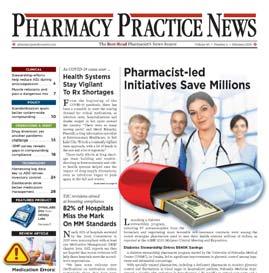
33 minute read
vaccinator pool
Expanding the COVID-19 Vaccinator Pool

Vaccination against COVID-19 in the United States is at an all-time high, but to maintain this pace, the nation still needs more experienced vaccinators to stay ahead of SARS-CoV-2. There still are not enough people vaccinated to reach herd immunity, according to CDC Director Rochelle Walensky, MD.
“The key to getting us back to our lives is increasing vaccinations, and to do that, we need more vaccinators,” said acting Health and Human Services (HHS) Secretary Norris Cochran in a statement.
The Public Readiness and Emergency Preparedness Act (PREP Act) has expanded its list of people who can administer the vaccines. The act includes pharmacists, pharmacy technicians, pharmacy students and now retired pharmacists.
Tom Kraus, MHS, JD, the vice president of government relations at ASHP, said such measures are well-timed. “We are, as a country, going to find ourselves with more vaccine supply coming online, and we’re going to need every potential vaccinator available to be vaccinating patients,” Kraus said. “Anything we can do to get additional vaccinators [on board] is a step in the right direction.”
Retired Pharmacists a Resource
Any retired pharmacist who had a valid state practice license within the past five years and is trained to provide intramuscular injections and cardiopulmonary resuscitation (CPR) can volunteer, Kraus explained. If the licensing state does not specify vaccination training, an Accreditation Council for Continuing Pharmacy Education–approved practical training program of at least 20 hours is required, according to the American Pharmacists Association (APhA). Their CPR certificate should be current, the APhA added.
Hospitals, community pharmacies and mass vaccination centers can feel confident in taking advantage of this labor pool because the PREP Act provides liability protections under federal and state law with respect to all claims for loss resulting from the administration or use of COVID-19 vaccines, according to HHS.
The PREP Act preempts state laws and regulations by state boards of pharmacy that would restrict or prohibit an active or retired pharmacist from administering the vaccine, but Kraus said he has not heard any concerns about allowing retired pharmacists to practice in this limited capacity.
Hospital and community pharmacists have been very engaged in the fight against COVID-19. “Pharmacists in those settings might be running the vaccination program on behalf of a health system, as well as serving as vaccinators,” he said.
There are about 300,000 pharmacists nationally, as well as pharmacy technicians, students and now retired pharmacists, so this could be a substantial number of people who can help vaccinate Americans. “This is a potentially significant source of vaccinators, particularly for mass vaccination sites,” Kraus said. On campuses, many schools are “leveraging pharmacists or encouraging their schools of pharmacy to form relationships with health systems or with public health departments. And most students will have had vaccination training as part of the school curriculum. So that’s another great resource of potential additional vaccinators.” (For more on the colleges of pharmacy COVID-19 response, see page 1.)
Leveraging Pharmacy Students
In addition to allowing retired pharmacists to participate, changes to the PREP Act also provided additional flexibility for engaging pharmacy students. Originally, they had to work under a licensed pharmacist, but now they can work under any licensed health care provider. This is going to be pivotal to using these students in mass vaccination and other sites, outside the pharmacy school, Kraus said.
Although the vaccines are free, facilities can charge an administration fee. Effective for vaccines provided on or after March 15, 2021, the payment rate will increase from $28.39 to $40. For two-dose COVID-19 vaccines, the rate is $40 per dose, a significant increase over the previous $16.94 for the first payment and $28.39 for the second. ASHP has advocated for reimbursement sufficient to support the additional costs associated with COVID-19 vaccine provision.
“With additional resources, providers will be better equipped to provide vaccines safely and quickly to more patients,” Kraus said.
Kraus hopes that as the pandemic winds down, both state and federal legislators recognize the contributions that pharmacists are making in the areas of testing, medication management and vaccine delivery. The best way to do that, he noted, is by passing provider status legislation. “There is no doubt that over the past year, we have seen both state governments and the federal government turn to pharmacy and say, ‘We need help, and you are a capable provider that we’re going to turn to,’” Kraus said. “ASHP and many of the pharmacy organizations are absolutely in alignment that we should be extending some of the flexibilities and making permanent some of the authorities to maintain the roles that pharmacists are playing” during the pandemic. “If the federal and state governments want pharmacists to be a provider they can turn to, they also need to make sure there’s a payment mechanism that’s going to work to support those services. The pandemic actually has been a case study that demonstrates the value that pharmacists bring as providers.”
For information from HHS about volunteering to administer COVID-19 vaccines, visit bit.ly/3taDGGw.

—Marie Rosenthal
The sources reported no relevant fi nancial disclosures.
Setting Up a Mass Vaccination Site
Anew resource from ASHP outlines the essential elements of successful mass immunization programs and emphasizes evidence-based best practices in the safe handling and preparation of vaccines for mass administration.
The pharmacy profession is well-positioned to offer such guidance, noted ASHP CEO Paul Abramowitz, PharmD. “Pharmacists have a deep understanding and expertise regarding the therapeutics, handling, preparation, distribution and monitoring of all vaccines, drugs and biologics.”
Drawing from the experiences of health-system pharmacy leaders from across the country who have coordinated vaccination sites responsible for the administration of up to 10,000 vaccines per day, ASHP recommends the following as essential elements of an effective mass immunization effort:
Leadership: Centralized leadership—pharmacist, physician and nursing—as well as leaders from operations, medical informatics, logistics, facilities, environmental services and security, are critical.
Planning: Scaling mass immunization programs requires deliberate and iterative planning. Pharmacy leadership supports the planning of vaccine storage and accountability, ancillary supplies, vaccine preparation and medication waste.
Communication, coordination and collaboration:
External communication amplifies awareness of successful mass immunization efforts. A public relations team can ensure the public is aware that the mass immunization site is active and share resources for scheduling appointments.
Regulatory and reporting compliance: For a mass immunization program to be effective, it must comply with state or local health department requirements related to COVID-19 vaccine reporting and personnel credentials.
Supply chain management: Vaccine and ancillary supply accountability, storage and security will avoid loss or waste of scarce resources. Pharmacy leaders can support efforts to train and supervise personnel who handle and prepare vaccine doses.
Vaccine safety: Safe vaccine handling and preparation practices will promote efficiency and reduce the risk for harm. Vaccine doses should be prepared in a dedicated location away from patient administration areas, restrooms or other environmental factors that may affect air quality.
Staff resources: Personnel should be trained and assigned roles according to their qualifications. Staff also should receive resources to support organized workflows.
These elements (bit.ly/3t4w8Fd) should be a welcome resource for the growing numbers of pharmacies that already have become sites for COVID-19 vaccinations. More than 20 national and regional pharmacy program partners were participating as of late April, according to the CDC (bit.ly/3evSXLF).
Image source: St. Joseph Mercy Ann Arbor.
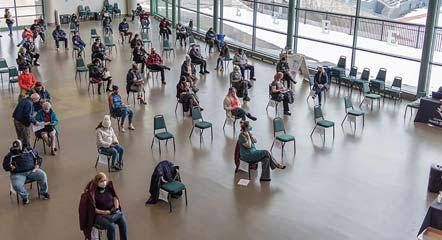
“Nothing will ever be the same after COVID-19” seems to be the general feeling among pharmacists, but just how different the new normal will be depends on many factors, according to the ASHP COVID-19 2020 National Survey and the industry-sponsored 2020 Hospital Pharmacy Operations Report. Both surveys paint a picture of how pharmacists worked during the pandemic, what they think the future holds, as well as technology’s role in their profession. In this first of a two-part series, Pharmacy Practice News discusses shortages, staffing and operational concerns. Part 2 will explore the important role technology plays in the pandemic, as well as trends affecting future pandemic preparedness.
How Did You Respond to the ‘Black Swan’ Event?
Is your organization prepared for a black swan event? That was a question posed during a session at the ASHP 2019 Midyear Clinical Meeting. Who knew that three months later, the audience would find out?
A “black swan” event is a rare and unpredictable occurrence that has significant consequences for an organization (bit.ly/3dnoLmz-PPN).
The irony of that ASHP session was not lost on Jennifer Symon, RPh, MBA, the director of clinical solutions at Kit Check. “It’s interesting that the [presentation] from 2019 talked about black swans, those unexpected events that are not controllable, and then look what happened in 2020.”
One of the responses to the pandemic Symon and her colleagues documented in the company’s own practice survey was a behavior she referred to as “futureproofing.” They found that back-up plans “weren’t enough or they were lacking processes, and everything was just stresstested by the pandemic,” she said, referring to findings from the company’s 2020 Hospital Pharmacy Operations Report (HPOR). “Some things worked out and some things didn’t.”
Such stressors—from drug shortages to staffing shortfalls—were significant and also borne out by the ASHP COVID-19 2020 National Survey, noted Michael Ganio, PharmD, BCPS, the group’s senior director of Pharmacy Practice and Quality.

Shortages of Drugs, PPE
The pandemic brought about not only drug shortages, but insufficient supplies of personal protective equipment (PPE), and once again demonstrated the fragility of the U.S. supply chain—another concern cited by many respondents to the ASHP National Survey.
Such sentiments are not unfounded. During one spike in the pandemic, the FDA identified 20 drugs for which either the active ingredients or finished product were solely sourced from China. Putting more pressure on the supply chain, India, also a major supplier of drug products to the United States, announced at the time that it would suspend some drug exports. Even if the products could get out of China and India, there was no guarantee that they would make it to the United States because air travel was suspended. Many products, including drugs and PPE, are shipped in the belly of passenger planes, and companies had to find alternative shipping methods.
That, combined with the surges seen in ICUs, particularly in New York City, Detroit and New Orleans, and the fact that it was not clear “how difficult resupplying those drugs would be, led to some angst,” Gaino explained at the 2021 Montana Pharmacy Association and HealthSystem Academy Combined Virtual CE Conference, in Helena, held in April.
Once the United States issued stay-athome recommendations, patients were encouraged to get a larger supply of drug refills, which stressed the supply chain even more. “The outpatient side was not spared either, as the CDC and other agencies were recommending that patients go get refills,” Ganio said.
Drug recalls were another stressor, according to the HPOR survey, which found that 25% of hospital pharmacists thought recalls were exacerbated by COVID-19, and 79% reported that each recall required up to 10 staff hours to manage. In addition, the survey found that 62% of hospitals experienced more than 10 different drug shortages in their pharmacy at any given time.
The ASHP COVID-19 2020 National Survey also asked about shortages affecting specific drug classes administered in the ICU, as well as albuterol metered-dose inhalers, which did not fit into a particular drug class but were given to COVID-19 patients. Just over 60% of respondents said they experienced a shortage of inhalers; 57.5% saw a shortage of sedatives and analgesics; 42.8%, of neuromuscular blocking agents; 34.1%, of corticosteroids; 23.7%, of investigational COVID-19 treatments; and 5.5%, of dialysis solutions.
Before the pandemic, most hospitals had a just-in-time inventory model—a strategy that worked thanks to daily deliveries from wholesalers. The ASHP survey asked what steps pharmacists took to manage the shortages. As a result of the threat to the supply chain, Ganio told Pharmacy Practice News, 90.6% of respondents said they “increased the day’s supply they were carrying of specific drugs, which I think was a significant finding.”
In addition, 25.9% of respondents expanded the use of premade or ready-to-mix systems; 18.5% expanded the use of outsourcing vendors; and 8.2% increased the day’s supply of all medications. “We [also] wanted to know if any of these changes were permanent,” he said. Indeed, 42% of survey respondents said they planned to increase inventory of selected onhand medications permanently.
The PPE shortage for personnel involved in patient care made a lot of headlines during the pandemic, but its effects on sterile compounding also were acute. The ASHP survey asked about changes that were implemented as a result of the PPE shortage, and found that 71.3% of respondents reported conserving, reusing or adopting an alternative garb in sterile compounding operations;
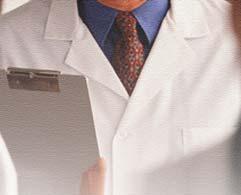
49.3% restricted entry into buffer rooms to minimize PPE use; 22.1% delayed personnel sterile-compounding competencies; 9.5% increased environmental monitoring in response to having to reuse PPE; 9% eliminated use of selected PPE due to the shortage; and 9% delayed certification of engineering controls.
“We found 70% were reusing or conserving PPE in some way, which makes sense given how significant the shortages were,” Ganio said.
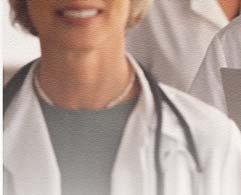
Staff Shortages
Pharmacy leadership had to deal with staff changes, according to both surveys. The HPOR survey found that 43% of pharmacies had to manage staff shortages and that it was a leading issue that will need to be addressed.
The ASHP survey found that 54.7% of respondents saw staffing reductions and 15.9% saw salaries cut, but 10.6% hired temporary staff to meet increased demand and 31% didn’t experience any of these changes. “The reductions were early on and in response to the census being low,” Ganio said. “There were a couple of areas that were surging [initially], but the rest of the country went into this sort of lockdown prevention of surges, and so elective procedures were being canceled and preventive [care] visits were being canceled.” As hospitals resumed more normal
operations—for instance, 97% of hospitals resumed all elective procedures by the summer of 2020—that required some rehiring of staff.
In addition, pharmacists were involved with COVID-19 testing and vaccinations, which also led to increased staffing, although some of that could have been temporary, Ganio said.
Overall, the nation’s drug experts became an important part of the fight against COVID-19, not only for testing and vaccinations, but also to help physicians understand and prescribe the many off-label and experimental medications that were used during the pandemic.
Hydroxychloroquine, tocilizumab (Actemra, Genentech), famotidine, baricitinib (Olumiant, Lilly) and ivermectin (Stromectol, Merck) were all used off-label

54% of hospital pharmacists saw staffing reductions and 15.9% took a pay cut. Source: ASHP COVID-19 National Survey
43%
of hospitals reported staff shortages.
Source: Kit Check survey
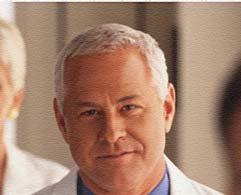
MOBILE
continued from page 4
“When Katrina hit, a whole hospital system was knocked out; if a cleanroom gets flooded, it could take months to get back online again,” Siegel said. “Most recently with COVID-19, there was a need for rapid increase in cleanroom capacity in some areas.”
A Solution During HVAC Renovation
In March, the Dayton VA Medical
This custom USP <800> mobile pharmacy was used by Moffitt Cancer Center to prepare medications for 200 patients per day during its facility renovations in 2020.
Center, in Ohio, put a mobile cleanroom in place to serve its sterile compounding needs during an approximately sixmonth project to upgrade the HVAC (heating, ventilating, and air conditioning) systems in its existing cleanroom to ensure <797> compliance. “We had options for a couple of different models, one of which resembles a semi-truck trailer on wheels that is parked in place. That’s designed to be even more mobile,” said William “John” Van Schepen Jr., PharmD, Dayton VA’s pharmacy program manager for sterile compounding and hazardous drugs. “We chose a unit that is a little larger, resembling a
at some point, and remdesivir (Veklury, Gilead), convalescent plasma and certain monoclonal antibody therapies, as well as COVID-19 vaccinations, all received emergency use authorizations from the FDA. Managing these medications required a whole new level of practice for pharmacists, and there were many unknowns, Ganio noted.
The ASHP survey found that to cope with these new clinical challenges, 78.5% of pharmacies said they developed algorithms or guidelines for offlabel medications. In addition, 54.9% opened COVID-19 compassionate- or investigational use studies to ensure access to medications such as remdesivir. Many smaller hospitals do not routinely participate in investigational studies, so this was new territory for many of them.
The rapidly changing pace of research on emerging COVID-19 therapies was another challenge for front-line pharmacists. In a given week, a study—often not peer-reviewed—would claim one off-label medication was favorable, and the day after its release, another study would refute it. “There were a lot of clinical, really fast-moving components to COVID-19 treatment,” Ganio said. “So, our clinicians were really forced to use their pharmacology knowledge.” —Marie Rosenthal







We help you achieve extraordinary results in all areas of health system pharmacy
Strategic Planning & Implementation Compliance that Improves Care Financial Results

We collaborate with you to deliver innovative solutions that will elevate your organization to peak performance levels. Our team of compliance experts will improve confi dence, enhance care and ensure patient, worker and community safety. Making the most of opportunities to manage costs and increase revenue is core to our consulting. We help you improve fi nancial performance across your organization.
Visante consultants bring you expertise in all areas of hospital and health system pharmacy:
• Comprehensive Strategic Assessments • 340B Program Solutions • Specialty Pharmacy Programs • Revenue Cycle and Drug Reimbursement
Strategies • Supply Chain Strategies • Drug Diversion Programs • Drug Compounding Excellence
Connect with Visante today to learn how we can help you reach your goals. Visit us at visanteinc.com, or call 866-388-7583.
PRACTICE SURVEYS
continued from page 8
The sources reported no relevant fi nancial disclosures.
Surveys by the Numbers
ASHP surveyed 1,437 pharmacy directors at general and children’s medical/surgical hospitals. Usable responses were received from 269 survey participants. The survey results will be published in the American Journal of Health-System Pharmacy. The Kit Check survey report (bit.ly/ 3sBfCLw) is based on input from 191 hospital pharmacy leaders, and 43% have at least 20 years of experience. Both surveys were sent in the fourth quarter of 2020 and closed in December.
4 Questions to Ask When Considering a Mobile Cleanroom
1. What’s Your Budget? Building a cleanroom suite from nothing costs about $2.5 to $3.5 million, depending on the size, said Jerry Siegel, PharmD, the vice president at Safe Medication Management Associates and a clinical associate professor at The Ohio State University College of Pharmacy, in Columbus. “For these mobile and modular units, the cost is between $800,000 to $1.2 million for a bigger unit, and you can get a very small onehood mobile unit for $150,000. Leasing costs somewhere between $35,000 and $50,000 a month.” 2. Buy or Lease? Most hospital pharmacies—including Yale New Haven Health and Dayton VA Medical Center—have chosen to lease their mobile cleanrooms, but if one or more are needed for an extended period, buying may be more economical. “Larger hospital chains that are planning to go through renovations at multiple locations may elect to purchase,” said Jeff Serle, the senior vice president of engineering for Germfree. “They are very mobile and can be fully repositioned in two to three weeks, including certification for use. Then they can be safely shut down and stored for periods of time, and you have an asset afterward in situations like disaster recovery.” 3. Modular or Mobile? Even within the “mobile” world, there are different options. “You have ‘on wheels’ and ‘not on wheels,’” Siegel said. “You can also have a vendor build you what’s called a relocatable mobile cleanroom. They will build it off-site to your specifications, put it on a truck, and bring it to your site and hook it up. One mobile tissue lab that I worked with had five of these modular units hooked together; they were each delivered singly and put together once they arrived.” Cleanroom Design LLC built two modular cleanrooms for a facility in Boston. “They slid them inside the space through a loading dock door, and now they’re part of the permanent structure inside,” said president Brian Clark. “They can be connected like building blocks, where you just add on and on if needed.” 4. How Soon Do You Need It? Choosing between modular or mobile also may be affected by a facility’s time line. Mobile units typically can be installed without construction permits, which can take six months or longer, depending on the state. “If you need a permit within six months, you’ll be hard-pressed,” Clark said. “It can be done but it’s challenging. But with mobile cleanrooms, for example, we have three right now in the factory that came back off lease that we could deliver in three to four weeks. Our longest lead time for mobile would be three to four months.”

—G.S.
Discover the S.M.O.F. difference
shipping container, which is brought in and placed with a crane. Our unit runs via power and water from the building, as compared to the trailer units, many of which have their own onboard generators and water tanks.”
So far, the mobile unit has worked quite well, Van Schepen said. “It took a full week to do the setup, training and certification, but we’ve been using it every day since then for all of our hazardous compounding and hazardous drug storage, as well as some nonhazardous compounding,” he said. “We’ve had no issues with meeting our usual volume.”
Challenges have included space, communication and new standard operating procedures. “First, it’s obviously a lot smaller than a normal cleanroom would be, so we have to be more efficient in our use of space, particularly counter space,” Van Schepen said. “We don’t have our normal phones in there, so we’ve had to use things like Vocera and Microsoft Teams to communicate. We’ve also had to establish procedures for delivering preparations once they’re made and restocking in order to minimize traffic and keep things as clean as possible.”
Van Schepen advised other pharmacies considering a mobile cleanroom to start the process early. “With something as big and complicated as this, delays are bound to happen,” he said. “Be as flexible as you can. You can’t budge on the regulations, of course, but be flexible in the areas you can be.”
—Gina Shaw
SMOFlipid is the FIRST and ONLY lipid injectable emulsion (ILE) with 4 oil sources.
S
oybean oil = omega-6 fatty acids
edium chain triglycerides = rapidly available energy1
live oil = omega-9 monounsaturated fatty acids
ish oil = omega-3 fatty acids containing EPA and DHA
M O F
Learn more about the SMOF difference and innovations that nourish at www.FreseniusKabiNutrition.com.
SMOFlipid is indicated in adults as a source of calories and essential fatty acids for parenteral nutrition (PN) when oral or enteral nutrition is not possible, insufficient, or contraindicated. Limitations of Use: The omega-6: omega-3 fatty acid ratio and Medium Chain Triglycerides in SMOFlipid have not been shown to improve clinical outcomes compared to other intravenous lipid emulsions. Contraindications: Known hypersensitivity to fish, egg, soybean, or peanut protein, or to any of the active ingredients or excipients. Severe hyperlipidemia or severe disorders of lipid metabolism with serum triglycerides >1,000 mg/dL.
WARNING: DEATH IN PRETERM INFANTS
• Deaths in preterm infants after infusion of intravenous lipid emulsions have been reported in the medical literature. • Autopsy findings included intravascular fat accumulation in the lungs. • Preterm infants and low-birth-weight infants have poor clearance of intravenous lipid emulsion and increased free fatty acid plasma levels following lipid emulsion infusion.
Colleges Pitching In
continued from page 1
spread through China and make its way toward Europe. “At the time, they were doing work with cancer screening using real-time PCR testing,” Cutler said. “As they were seeing the virus leak out of China, they thought the technology they were using could be employed to test for COVID-19, with saliva.”
Their hunch ultimately translated to the Saliva Assay Free Expedited (SAFE) test, which demonstrated a high level of accuracy in detecting SARS-CoV-2, doing so within 24 hours at a lower cost than nasopharyngeal swab testing, Cutler said. The College of Pharmacy received Clinical Laboratory Improvement Amendments certification, and the test is under review for emergency use authorization (EUA) by the FDA. Their efforts also captured the attention of South Carolina Governor Henry McMaster, who worked with the South Carolina General Assembly to award the college $16.6 million to expand use of the test and share it with other institutes of higher learning.
“We’ve helped other institutions work with the test from soup to nuts, including setting it up and running it to applying for state certification and FDA emergency use authorization,” Cutler said.
SAFE has been used roughly 100,000 times in students, staff and faculty at USC, as well as some individuals in the community and at other universities, Cutler said. The college also is sequencing positive cases they find using the SAFE test.
Touro College of Pharmacy
In New York City, clinical pharmacists, pharmacy professors and graduate students at Touro College of Pharmacy have been testing and vaccinating patients on and off campus.
Henry Cohen, PharmD, the dean of the College of Pharmacy, said they initially used the type of PCR-based saliva testing pioneered at the University of South Carolina but switched to nasal swab antigen testing (BinaxNOW, Abbott) in October 2020 because the test produces results with 93% sensitivity and 98% specificity within 15 to 30 minutes.
In addition to detecting individuals infected with SARS-CoV-2, pharmacy staff, students and faculty can make use of testing encounters to educate patients and combat vaccine hesitancy, Cohen noted. “It’s also a great chance to present the latest evidence on vaccine efficacy and safety and to tell people about social distancing, mask wearing and other preventive measures,” he said.
Medical College of Wisconsin
Pharmacists in academia have brought their specialized knowledge to campuswide COVID-19 testing and vaccination efforts at the Medical College of Wisconsin (MCW) Pharmacy School, in Milwaukee. Kristin Busse, PharmD, an assistant professor in the Department of Clinical Sciences at MCW, led the operational aspect of MCW’s vaccination program, partly because of her experience handling the institutional use of novel and experimental agents. “We’ve managed it basically like an investigational drug, providing all the necessary documentation for preparation, storage and usage, and making sure we have a very strong audit trail of use of the vaccine,” Busse said.
Before any COVID-19 vaccines were approved, Busse and her colleagues
SMOFLIPID (lipid injectable emulsion), for intravenous use BRIEF SUMMARY OF PRESCRIBING INFORMATION FOR HEALTHCARE PROVIDERS
This brief summary does not include all the information needed to use SMOFlipid safely and effectively. Please see full prescribing information, including Boxed Warning for SMOFlipid (lipid injectable emulsion), for intravenous use at www.FreseniusKabiNutrition.com.
• Aluminum Toxicity: SMOFlipid contains no more than 25 mcg/L of aluminum. During prolonged PN administration in patients with renal impairment, the aluminum levels in the patient may reach toxic levels. Preterm infants are at greater risk because their kidneys are immature, and they require large amounts of calcium and phosphate solutions, which contain aluminum. Patients with renal impairment, including preterm infants, who receive parenteral intakes of aluminum at greater than 4 to 5 mcg/kg/day can accumulate aluminum to levels associated with central nervous system and bone toxicity. Tissue loading may te Coat occur at even lower rates of administration of PN products. • Risk of Parenteral Nutrition-Associated Liver Disease (PNALD): PNALD has been at UConn Pharmacy third-year stuiversity of ) School of Pharyear pharmacy students celebrate into advanced pharmacy practice experience rotations. WARNING: DEATH IN PRETERM INFANTS • Deaths in preterm infants after infusion of intravenous lipid emulsions have been reported in the medical literature. • Autopsy findings included intravascular fat accumulation in the lungs. • Preterm infants and low-birth-weight infants have poor clearance of intravenous lipid emulsion and increased free fatty acid plasma levels following lipid emulsion infusion. reported in patients who receive PN for extended periods of time, especially preterm infants, and can present as cholestasis or steatohepatitis. The exact etiology is unknown and is likely multifactorial. Intravenously administered phytosterols (plant sterols) contained in plant-derived lipid formulations have been associated with development of PNALD, although a causal relationship has not been established. If SMOFlipid-treated patients develop liver test abnormalities, consider discontinuation or dose reduction. • Hypertriglyceridemia: Impaired lipid metabolism with hypertriglyceridemia may occur in conditions such as inherited lipid disorders, obesity, diabetes mellitus, ked the next and metabolic syndrome. s—moving on to INDICATIONS AND USAGE • Monitoring/Laboratory Tests: Routinely monitor serum triglycerides, fluid ver, unlike previ-SMOFlipid is indicated in adults as a source of calories and essential fatty acids and electrolyte status, blood glucose, liver and kidney function, blood count ts in the annual ny weren’t able ds, or otherwise for parenteral nutrition (PN) when oral or enteral nutrition is not possible, insufficient, or contraindicated. Limitations of Use The omega-6: omega-3 fatty acid ratio and Medium Chain Triglycerides in including platelets, and coagulation parameters throughout treatment. Monitoring patients for signs and symptoms of essential fatty acid deficiency (EFAD) is recommended. • Interference with Laboratory Tests: Content of vitamin K may counteract her face-to-face.SMOFlipid have not been shown to improve clinical outcomes compared to other anticoagulant activity. The lipids contained in this emulsion may interfere with ct that we are today does intravenous lipid emulsions. DOSAGE AND ADMINISTRATION some laboratory blood tests (e.g., hemoglobin, lactate dehydrogenase [LDH], bilirubin, and oxygen saturation) if blood is sampled before lipids have cleared from the bloodstream. ical imporvent stands for,” mD, the dean of dents, friends The recommended daily dosage in adults is 1 to 2 grams/kg per day and should not exceed 2.5 grams/kg per day. SMOFlipid 1000 mL is supplied as a Pharmacy Bulk Package for admixing only and is not for direct infusion. Prior to administration, transfer to a separate PN container. ADVERSE REACTIONS Most common adverse drug reactions >1% of patients who received SMOFlipid from clinical trials were nausea, vomiting, hyperglycemia, flatulence, pyrexia, abdominal pain, increased blood triglycerides, hypertension, sepsis, dyspepsia, ng this winter’s CONTRAINDICATIONS urinary tract infection, anemia and device-related infection. eremony. fessional rite of pharmacy studvanced pharrience rotations white pharmaKnown hypersensitivity to fish, egg, soybean, or peanut protein, or to any of the active ingredients or excipients. Severe hyperlipidemia or severe disorders of lipid metabolism with serum triglycerides > 1,000 mg/dL. WARNINGS AND PRECAUTIONS • Death in Preterm Infants: (see BLACK BOX WARNING) • Hypersensitivity Reactions: SMOFlipid contains soybean oil, fish oil, and egg Less common adverse reactions in 1% of patients who received SMOFlipid were dyspnea, leukocytosis, diarrhea, pneumonia, cholestasis, dysgeusia, increased blood alkaline phosphatase, increased gamma-glutamyltransferase, increased C-reactive protein, tachycardia, liver function test abnormalities, headache, pruritis, dizziness, rash and thrombophlebitis. The following adverse reactions have been identified during post-approval use of SMOFlipid in countries where it is registered. Infections and Infestations: infection. ing the School phospholipids, which may cause hypersensitivity reactions. Cross reactions Respiratory, Thoracic and Mediastinal Disorders: dyspnea. the UConn seal ame. hite Coat Cerhave been observed between soybean and peanut oil. Signs or symptoms of a hypersensitivity reaction may include: tachypnea, dyspnea, hypoxia, bronchospasm, tachycardia, hypotension, cyanosis, vomiting, nausea, headache, sweating, dizziness, altered mentation, flushing, rash, urticaria, erythema, To report SUSPECTED ADVERSE REACTIONS, contact Fresenius Kabi USA, LLC, at 1-800-551-7176, option 5, or FDA at 1-800-FDA-1088 or www.fda.gov/medwatch. tions of profes-pyrexia, or chills. If a hypersensitivity reaction occurs, stop infusion of SMOFlipid DRUG INTERACTIONS al behavior and immediately and undertake appropriate treatment and supportive measures. Coumarin and Coumarin Derivatives, Including Warfarin: Anticoagulant activity have a chance • Risk of Catheter-Related Infections: Lipid emulsions, such as SMOFlipid, can may be counteracted; monitor laboratory parameters. n Association of Oath of a Pharhe first time. support microbial growth and is an independent risk factor for the development of catheter-related bloodstream infections. The risk of infection is increased in patients with malnutrition-associated immunosuppression, long-term use and poor maintenance of intravenous catheters, or immunosuppressive effects of USE IN SPECIFIC POPULATIONS • Pregnancy and Lactation: There are no available data on risks associated with SMOFlipid when used in pregnant or lactating women. t of profession-other concomitant conditions or drugs. • Pediatric Use: The safety and effectiveness of SMOFlipid have not been dent pharmasaid. ss of the vir• Fat Overload Syndrome: This is a rare condition that has been reported with intravenous lipid emulsions. A reduced or limited ability to metabolize lipids accompanied by prolonged plasma clearance may result in a syndrome characterized by a sudden deterioration in the patient’s condition including established in pediatric patients. • Hepatic Impairment: Parenteral nutrition should be used with caution in patients with hepatic impairment. Hepatobiliary disorders are known to develop in some patients without preexisting liver disease who receive PN, including chool plans fever, anemia, leukopenia, thrombocytopenia, coagulation disorders, cholestasis, hepatic steatosis, fibrosis and cirrhosis (PN associated liver disease), ypical in-per-hyperlipidemia, fatty liver infiltration (hepatomegaly), deteriorating liver possibly leading to hepatic failure. White Coat Cere-function, and central nervous system manifestations (e.g., coma). OVERDOSE • Refeeding Syndrome: Reintroducing calories and protein to severely In the event of an overdose, fat overload syndrome may occur. Stop the meant to bring undernourished patients with PN may result in the refeeding syndrome, characterized by the intracellular shift of potassium, phosphorus, and SMOFlipid infusion until triglyceride levels have normalized. The effects are usually reversible by stopping the lipid infusion. If medically appropriate, ore they head magnesium as the patient becomes anabolic. Thiamine deficiency and fluid further intervention may be indicated. Lipids are not dialyzable from serum. ctions, so hold-retention may also develop. es the most
—D.W. Henry Cohen, PharmD, the dean of the Touro College of Pharmacy, in New York City, with students involved in the school’s COVID-19 outreach program.

REFERENCE: 1. Deckelbaum RJ, et al. Biochemistry (Mosc). 1990;29(5):1136-1142.




developed training materials, recruited the initial cadre of volunteers and built their vaccine distribution plan in partnership with an affiliated hospital. “We developed workflow processes ranging from vaccine receipt and secure storage to vaccine distribution to clinic, record keeping and vaccine allocation requests,” she said.
To accommodate the storage needs of the Pfizer/BioNTech messenger RNA–based vaccine (BNT162b6), they borrowed –80° C freezers from their basic science colleagues at MCW, “which made on-site inventory management easier, [considering] the five-day expiration dating under refrigeration,” she noted.
The advanced planning paid off, and Busse and her team hit the ground running when the Pfizer/BioNTech vaccine received its EUA on Dec. 21, 2020. The next day, they began immunizing campus staff, faculty and students, and have administered 13,000 doses since then. They have the capacity to immunize 80 patients per hour and have had a single-day record of 690 COVID-19 vaccinations.
The scale and complexity of the operations have required a multidisciplinary effort, Busse noted. “Pharmacy students and faculty were first to respond to the call for vaccinator support, but clinical research personnel soon followed in both vaccinator and nonvaccinator roles, and medical students and faculty joined the ranks of vaccinators as the clinic continued into late February and March.”
Additional personnel from departments around the campus helped staff the record-keeping and clinic support roles, she said. “Dose preparation was always overseen by a licensed pharmacist, but technical support to draw up doses of vaccine relied heavily on basic science lab faculty and staff, as well as veterinarians who run our biomedical resource center.”
Busse emphasized the importance of optimizing operations post-launch. She said her team gathers each week to find ways to improve their processes, and early on, they found that asking patients to complete paperwork in line was creating a bottleneck. “So we used tables spaced 6 feet apart to complete paperwork prior to check-in,” Busse said. “That’s one of a number of small efficiencies that have worked well.”
For pharmacy students involved in the vaccination clinic, learning how to interact with patients and seeing what it takes to run the clinic have been invaluable, Busse noted. The pharmacy students also have gained confidence through this experience. “Vaccinating is repetitive and allows students to get really comfortable with a process and gain experience with each patient they vaccinate, for example, by answering new and repeated questions.”
UConn School of Pharmacy
Pharmacy students at the University of Connecticut (UConn) School of Pharmacy, in Storrs, have spent thousands of hours at vaccination clinics around the state, not only immunizing but training more than 800 health-system and hospital providers in proper COVID-19 vaccine administration and participating in state-run contact tracing.
Jill Fitzgerald, PharmD, the director of experiential learning and continuing professional development at UConn, said playing a central role in the clinic’s operations has been a profound experience for students. Many have said they have developed “a sense of helping the state’s citizens maintain good health and in reducing the impact of the pandemic, and patients and families have expressed gratitude for all the professionals working to get as many people vaccinated as possible.”
The efforts of colleges of pharmacy— both students and faculty—will have an “immeasurable impact on our profession,” Fitzgerald added. “The exposure of pharmacists in arenas other than community pharmacy is raising public awareness that our profession can make enormous contributions in keeping our citizens healthy.”
Cohen, of Touro College of Pharmacy, agreed. “If there’s a silver lining for the profession of pharmacy with this terrible pandemic, it’s that it has put us in the spotlight and shown others how we can play an integral role in managing [COVID-19].”



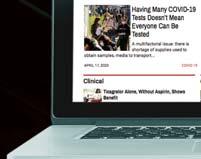

—David Wild
The sources reported no relevant fi nancial disclosures.
Read Pharmacy Practice News DRIVEN TO FULFILL THE Anywhere, Anytime! PROMISE OF BIOSIMILARS— THE PFIZER WAY
The Pfizer Promise is simple:
To help you provide patients with more treatment options while delivering the largest portfolio of potentially cost-saving biosimilars.1-3

Breadth of offerings
Pfizer has the largest portfolio of oncology biosimilars on the market, including both cancer therapies and supportive care products, to give patients more treatment options.2,3
Quality focused
Pfizer oncology biosimilars are all produced to meet the same high-quality standards as its biologics—using the same robust protocols for monitoring quality throughout every stage of the manufacturing process.4
Manufacturing and supply experience
Pfizer leverages more than 30 years of state-of-the-art manufacturing and supply-chain experience in biologics to reliably deliver biosimilars to patients.4
To learn more about Pfizer’s oncology biosimilars, visit us online at PfizerBiosimilars.com
References: 1. IMS Institute for Healthcare Informatics. Delivering on the Potential of Biosimilar Medicines: The Role of Functioning Competitive Markets. Parsippany, NJ: IMS; March 2016. 2. Drugs.com. How many biosimilars have been approved in the United States? https://www.drugs.com/medical-answers/many-biosimilars-approved-united-states-3463281/. Updated December 8, 2019. Accessed April 6, 2020. 3. McGowan S, Jesse M. Biosimilars Pipeline Report. AmerisourceBergen. https:/www.amerisourcebergen.com/-/ media/assets/amerisourcebergen/biosimilars-pipeline-report_0420_v3.pdf?la=en&hash=1071304C7B66ED62628201B8268C0B633 627CB6B. Updated May 1, 2020. Accessed June 4, 2020. 4. Data on file. Pfizer Inc., New York, NY.
